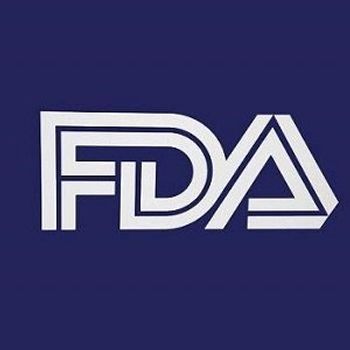
Recapping Research From 2023 International Stroke Conference
As a recap from ISC 2023, get caught up on some of the latest news in stroke as the NeurologyLive® team shares some of our data updates and expert insights.
In recent months, the NeurologyLive® team has been covering the news and conducting interviews with experts on the latest updates in the clinical care of individuals with stroke, including those with acute stroke and poststroke.
To recap the
Expert Insights
At the last day of the meeting,
Shumei Man, MD, PhD, medical director of stroke at Fairview Hospital, a thrombectomy capable stroke center at
Latest Literature
Blood Pressure Medications Not Safe or Effective in Lowering Top Number of BP Reading After Endovascular Stroke Treatment
New findings from the phase 2 randomized, open label, BEST-II trial (NCT04116112) of 120 patients with acute ischemic stroke suggested that use of blood pressure medications (BPM) to lower systolic blood pressure immediately following endovascular treatment (EVT) for acute ischemic stroke may not be safe or effective.4 The results helped inform the safety of lowering SBP for patients with acute ischemic stroke following EVT and why individualized blood pressure control may be the way forward.
In the study, patients were randomly assigned to have their systolic blood pressure lowered to a targeted SBP (n = 40, for SBP lowered to less than or equal to 180 mm Hg; n = 40, SBP to less than 160 mm Hg; and n = 40 SBP of less than 140 mm Hg). Findings showed that average SBP reached 129 mm Hg in the less than or equal to 180 mm Hg-target group, 130 mm Hg in the target group below 160 mm, and lowered to an average of 123 mm Hg in the less than 140 mm Hg-target group.
Investigators enrolled patients with acute ischemic stroke and successful EVT from 3 stroke centers between January 2020 and February 2022. Patients received nicardipine, an anti-hypertensive medication, within one hour after EVT and given 24 hours if their SBP was above their target. The primary study outcomes were infarct volume at 36 hours and 90 days, analyzed with the utility-weighted modified Rankin Scale score. Limitations included the sample of patients involved in the trial and results may not be generalizable because patients came from only three stroke centers.
Combination of Higher Dose ApTOLL and EVT Reduces Mortality and Disability in Ischemic Stroke
Findings from a phase 2a study (NCT04734548) assessing ApTOLL in patients presenting with ischemic stroke showed that use of the TOLL-like receptor 4(TLR4) antagonist at doses of 0.2 mg/kg within 6 hours of onset in combination with endovascular treatment (EVT) was safe, and associated with reduced mortality and disability at 90 days.5 In the final cohort of 119 patients, those on ApTOLL 0.2 mg/kg accounted for the lowest proportion of deaths at 90 days (4.76%), followed by the placebo group (16.98%), and the 0.05 mg/kg ApTOLL group (22.5%).
In the original phase 1b portion of the trial, 32 patients aged 18 to 90 years with large vessel occlusion (LVO) were assigned to 4 ascending doses of ApTOLL at 0.025, 0.05, 0.1, and 0.2 mg/kg. There were 6 patients on study drug and 2 patients on placebo in each group to assess which dose performed better, thus moving it into the phase 2a portion of the trial. At the conclusion of phase 1b, investigators moved the 0.05 and 0.2 ApTOLL dose groups forward for further evaluation, this time in a larger sample size.
Patients had Alberta Stroke Program Early CT Score (ASPECTS) scores between 5 and 10, and estimated infarct core volume on CT-perfusion that was between 5 and 70 ml.
In addition to performing better the primary outcome of death, those in the higher dose ApTOLL group showed reduced brain edema and hemorrhagic transformation at 90 days. At 72 hours poststroke, those on 0.2 mg/kg ApTOLL showed reduced mean infarct volume (–29.31cc, 90% CI, –49.28 to –9.34), and National Institutes of Stroke Scale (NIHSS) severity score (–3.94; 90% CI, –6.86 to –1.02). Additionally, this group showed better outcomes on disability at 90 days, demonstrated by shift in modified Rankin Scale score (OR, 0.41; 90% CI, 0.20-0.85).
REFERENCES
1. Schwamm LH, Kamel H, Sethi PP, et al. 3-year Results from the STROKE-AF Randomized Trial. Presented at: 2023 International Stroke Conference; February 8-10; Dallas, TX. LB1
2. Martucci M, Toth G, Buletko A, Khawaja Z, Russman AN, Hussain MS. Mobile stroke unit: direct to angio or some stops along the way? Presented at: 2023 International Stroke Conference; February 8-10; Dallas, TX. Abstract WMP85
3. Blaginykh E, Uchino K, Khawaja Z, et al. Collaboration between acute care hospitals and rehabilitation hospitals reduces 30-day readmission and mortality after ischemic stroke hospital discharge. Presented at: 2023 International Stroke Conference; February 8-10; Dallas, TX.
4. Mistry E, Hart K, Davis L, et al. Blood Pressure After Endovascular Stroke Treatment (BEST)-II: A Randomized Clinical. Presented at: 2023 International Stroke Conference; February 8-10; Dallas, TX. LB18
5. Hernandez M, Cotgreave I, Gallego J, et al. A double-blind, placebo-controlled, randomized, phase 1b/2a clinical study of ApTOLL for the treatment of acute ischemic stroke. Presented at: 2023 International Stroke Conference; February 8-10; Dallas, TX. LB2.
Newsletter
Keep your finger on the pulse of neurology—subscribe to NeurologyLive for expert interviews, new data, and breakthrough treatment updates.



















